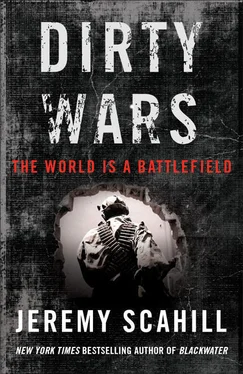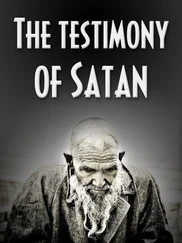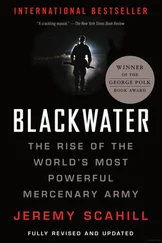As JSOC’s resources were overwhelmingly dedicated to Iraq, the US approach in Somalia consisted of a covert CIA proxy war. And the United States made Mohamed Qanyare its man in Mogadishu. According to classified US diplomatic cables from the US Embassy in Nairobi, US intelligence fiercely dismissed internal critics of its use of the alliance of warlords to carry out targeted kill and capture operations. “Arguments from diplomatic and NGO [nongovernmental organization] colleagues that a subtler approach…will help us address our CT concerns fail to take into account the immediacy of the threat,” read one cable. Certain individuals, the cables stated bluntly, “must be removed from the Somali equation.”
It was the beginning of a multiyear relationship among a network of murderous warlords and the CIA that would set Somalia on a course toward even further chaos and bloodshed. It would also result in the very Islamist militant forces Washington wanted crushed emerging more powerful than they had ever been before.
FOR MOST AMERICANS, mention of the word Somalia evoked one of two images: a starving child or US soldiers being dragged through the streets of Mogadishu following the infamous Black Hawk Down incident of 1993. Al Qaeda’s alleged role in the Mogadishu battle was included in a 1998 indictment against bin Laden in the United States, which charged that al Qaeda had trained Somali clans to oppose the UN mission, culminating in the killing of eighteen US soldiers and the wounding of seventy-three others in Mogadishu. Bin Laden certainly helped bolster that narrative. He had issued a declaration that year, calling the United States “the snake” and exhorting his followers to “cut the head off and stop [it].” Bin Laden later boasted in an interview that the militants who brought down the Black Hawks were among 250 jihadists sent by him to Somalia. He declared, “The youth were surprised at the low morale of the American soldiers and realized more than before that the American soldier was a paper tiger and after a few blows ran in defeat…dragging their corpses and their shameful defeat.”
Nonetheless, many experts have cast doubt on al Qaeda’s centrality to those events. Journalists interviewed Somalis who said they had “never heard of bin Laden until he began boasting about Somalia years later.” Undoubtedly, during this period, bin Laden was seeking to make his mark, but Somali militias hardly needed his help to wreak havoc. The country had already descended into a perpetual state of civil war, with various warlords commanding militias that were terrorizing and destabilizing the country as they fought neighborhood to neighborhood for control. After the withdrawal of the UN force in 1994, Somalia plummeted deeper into chaos.
The “Battle of Mogadishu” was the bloody finale to a mission codenamed Operation Gothic Serpent. Run by Major General William Garrison, then commander of JSOC, it went down as one of the greatest disasters for the US Special Operations community since the botched rescue mission in 1980 to free American hostages in Tehran. Many within the JSOC community did not see it that way. Lieutenant General Boykin, one of the original members of Delta Force, served alongside Garrison on the Somalia mission as the Delta contingent’s commander. “This ragged place had just chewed up and spit out elite fighters from the most powerful army in the history of the world,” Boykin recalled thinking as he stood in Mogadishu after the battle. He blasted the Clinton White House for abandoning Somalia. In the aftermath of the disaster, Boykin and Garrison had pushed for more troops and called for ramping up the offensive, requests that were rejected. General Garrison retired from the military on August 3, 1996. It was exactly two days after Mohamed Farrah Aidid died in Somalia, having sustained injuries during a gun battle a few weeks earlier. Although Somalia would be largely ignored by the United States in the years to come, it was never far from the minds of the JSOC operators.
It was not until 1996, after bin Laden was expelled from Sudan, that al Qaeda began to make its presence felt in East Africa. In the summer of 1998, US agents in Albania facilitated the extraordinary rendition of five members of Islamic Jihad, Ayman al Zawahiri’s organization. The men were transferred to Egypt, where some claimed they were tortured, including by electric shock to the genitals. On August 5, Zawahiri published a letter in a British paper vowing revenge against America in “a language they will understand.” Two days later, on August 7, 1998, al Qaeda cells, organized out of Nairobi, carried out simultaneous truck bombings of the US embassies in Kenya and Tanzania, killing 224 people, including twelve Americans, and injuring 5,000 more. It was the first time much of the world had ever heard of bin Laden, and the FBI put him on its Ten Most Wanted List. The al Qaeda leader, in taking responsibility for the embassy attacks, initially said that they were payback for the US “invasion” of Somalia, but the chosen date of the attacks also coincided with the eighth anniversary of US troops deploying to Saudi Arabia.
“We will use all the means at our disposal to bring those responsible to justice no matter what or how long it takes,” President Clinton declared in the Rose Garden after the bombings. Clinton signed a secret finding authorizing the covert use of lethal force in hunting down those responsible; the White House had determined that a mission to kill bin Laden was “not inconsistent with the ban on assassinations.” While Clinton authorized the CIA to use lethal force against bin Laden, subsequent instructions issued to CIA station chiefs globally emphasized that arresting bin Laden was preferable. The option of using US Special Ops Forces was on the table, but the administration concluded it “was much easier and much less risky to fire off cruise missiles,” according to the Pentagon report commissioned by Rumsfeld that reviewed Clinton-era counterterrorism policy. General Downing, the former commander of JSOC and SOCOM, described the attitude he encountered from Clinton administration officials as: “Don’t let these SOF guys through the door because they’re dangerous…. They are going to do something to embarrass” the country.
Although some US intelligence indicated that scouting missions for the embassy bombings were coordinated in Somalia, the Clinton White House would not permit any incursions into Somalia. Instead, the US response was to strike suspected al Qaeda sites in Afghanistan and Sudan with longrange cruise missiles in a mission code-named Operation Infinite Reach. The target of the Sudan bombing, al Shifa factory, turned out to be a legitimate pharmaceutical plant, which produced half of Sudan’s medications, and not, as the United States alleged, a facility for manufacturing nerve gas. Regardless, East Africa had been ripped wide open as a new front in what was rapidly becoming a covert US war against al Qaeda. “We are involved in a long-term struggle,” Secretary of State Madeleine Albright declared. “This is unfortunately the war of the future.”
When the Bush administration came to power, Defense Secretary Rumsfeld agreed with Albright’s assessment but viewed the Clinton administration’s approach to fighting that “war of the future” with utter disdain. He came into office determined to put the darkest of the US military forces front and center in the US war machine, and 9/11 had accelerated his plans. But, in the early years after 9/11, Somalia was, at best, a third-tier concern for the Bush administration—behind the war in Afghanistan and, eventually, Iraq.
IN THE YEARS FOLLOWING the US and UN withdrawal from Mogadishu, Somalia was further destroyed. The beautiful, Italian-influenced architecture of the capital was transformed into a skyline of bullet-pocked skeletons of once gorgeous buildings. Jobless youth—many addicted to khat—joined up with clan-based militias and devoted their existence to the cause of the warlords. “Everyone was thinking in terms of creating a small slice of Mogadishu as his turf,” recalled Buubaa, the former foreign minister. “It was as if the Somali state was over and everybody wanted to create his little turf to collect money and to become powerful just for personal gains, not for national gains.” This was the Somalia that the Americans flew into in 2003 when they first approached Qanyare, one of the very people who had helped destroy the country.
Читать дальше












